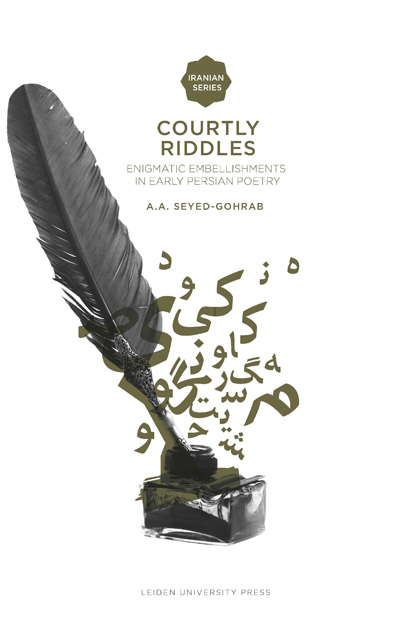Summary
This study of Persian literary riddles reveals a number of functions that they served, in particular at the courts, from the tenth to the twelfth centuries. The riddles included in this study are written in the Khurāsānī style, marked by inimitable simplicity, the harmonious use of imagery, and a plain poetic technique. Riddles and literary descriptions established their popularity in an epoch characterised by Clinton as the era of “a continuous refinement of the language of metaphor.” It appears that the popularity of literary description (vaṣf) and riddles generated a change from the plain Khurāsānī style to a more intricate Irāqī style in the twelfth century. Poets such as Mukhtārī, Masʿūd Saʿd Salmān and Sanāʾī are good examples of the latter.
The question is why poets started to refine the language of metaphor. I have searched for an answer in the genre of riddling and literary description, areas in which the poet had to use novel metaphors and imagery. Before, (except the mathnavī genre) poetry was commonly panegyric, praising the patron's qualities and putting them into a historical context. When a play element was gradually introduced, this gave rise to a different kind of competition between poets. Apparently, this search for novel poetic rhetoric created the tradition of poeta doctus, a term used to refer to the poets who employed convoluted techniques and contrived complex metaphors inspired by learned and scientific allusions. In riddles and in descriptive poetry, the poet had to push the literary conventions to create a familiar but at the same time, novel imagery. Poets competed for the favour of the patrons in a rivalry of wit and technique. The language of these poets is notoriously enigmatic.
Riddles then were not composed purely for their literary merits. As a challenging way to present their poetic genius, poets such as Maūnchihrī and Mukhtārī used the riddle as a letter of application for the profession of court poet. While Manūchihrī dedicated a riddle on a candle to the poet laureate to show his virtuosity, Mukhtārī wrote a long poem enumerating the various charactertraits of an ideal ruler, and his military power and his administration, hoping to be admitted at court.
- Type
- Chapter
- Information
- Courtly RiddlesEnigmatic Embellishments in Early Persian Poetry, pp. 200 - 202Publisher: Amsterdam University PressPrint publication year: 2010

